-
 Bitcoin
Bitcoin $107,341.7259
0.15% -
 Ethereum
Ethereum $2,438.6204
0.70% -
 Tether USDt
Tether USDt $1.0003
-0.02% -
 XRP
XRP $2.1866
1.94% -
 BNB
BNB $649.0952
0.36% -
 Solana
Solana $150.9602
5.63% -
 USDC
USDC $0.9999
0.00% -
 TRON
TRON $0.2742
0.40% -
 Dogecoin
Dogecoin $0.1645
1.93% -
 Cardano
Cardano $0.5669
1.18% -
 Hyperliquid
Hyperliquid $37.8286
4.19% -
 Bitcoin Cash
Bitcoin Cash $491.4669
-2.74% -
 Sui
Sui $2.8150
3.06% -
 Chainlink
Chainlink $13.4184
2.91% -
 UNUS SED LEO
UNUS SED LEO $9.0809
0.27% -
 Avalanche
Avalanche $18.0295
2.60% -
 Stellar
Stellar $0.2396
1.19% -
 Toncoin
Toncoin $2.8587
0.13% -
 Shiba Inu
Shiba Inu $0.0...01160
2.59% -
 Litecoin
Litecoin $86.4192
1.45% -
 Hedera
Hedera $0.1486
1.19% -
 Monero
Monero $308.4324
0.87% -
 Polkadot
Polkadot $3.4202
1.43% -
 Bitget Token
Bitget Token $4.6436
-0.34% -
 Dai
Dai $0.9998
-0.02% -
 Ethena USDe
Ethena USDe $1.0002
0.00% -
 Uniswap
Uniswap $7.1527
3.29% -
 Pi
Pi $0.5357
-8.45% -
 Pepe
Pepe $0.0...09588
4.61% -
 Aave
Aave $259.9759
0.81%
What are Bitget's contract liquidation rules? How to avoid forced liquidation?
Bitget's liquidation rules aim to protect traders from excessive losses by automatically closing positions when margin falls below the maintenance level.
May 10, 2025 at 12:01 pm
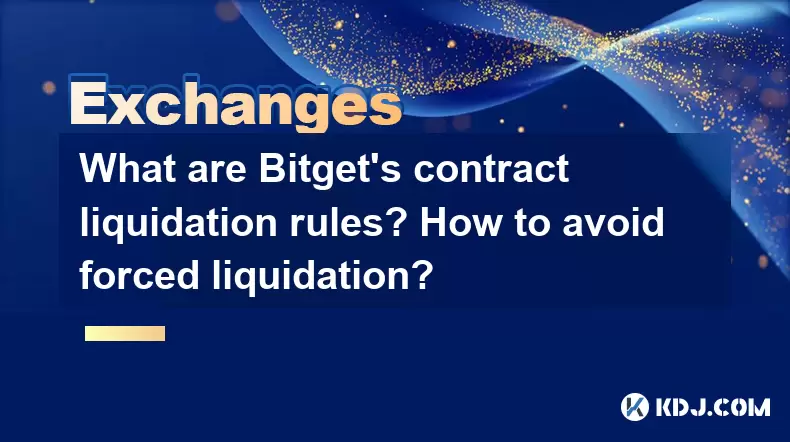
Introduction to Bitget's Contract Liquidation Rules
Bitget, a leading cryptocurrency exchange, has established specific rules for contract liquidation to ensure fair and transparent trading practices. Understanding these rules is crucial for traders to manage their positions effectively and avoid unexpected losses. Contract liquidation occurs when a trader's position is forcibly closed due to insufficient margin or adverse market movements. This article will delve into the specifics of Bitget's liquidation rules and provide actionable strategies to help traders avoid forced liquidation.
Understanding Bitget's Liquidation Mechanism
Bitget's liquidation mechanism is designed to protect the platform and its users from excessive losses. When a trader's margin falls below the maintenance margin level, the position is at risk of liquidation. The maintenance margin is the minimum amount of margin required to keep a position open. If the market moves against the trader and the margin level drops below this threshold, Bitget will automatically liquidate the position to prevent further losses.
The liquidation process involves closing the trader's position at the current market price. If the market price is not favorable, the trader may incur a loss. To mitigate this risk, Bitget employs a risk management system that continuously monitors positions and executes liquidations when necessary. Understanding this mechanism is essential for traders to manage their risk exposure effectively.
Key Factors Affecting Liquidation
Several factors can influence the likelihood of a position being liquidated on Bitget. Leverage is a critical factor, as higher leverage increases the risk of liquidation. Traders using high leverage should be particularly cautious and monitor their positions closely. Market volatility also plays a significant role, as sudden price movements can quickly erode a trader's margin.
Position size is another important consideration. Larger positions require more margin and are more susceptible to liquidation if the market moves unfavorably. Additionally, funding rates in perpetual contracts can impact the margin requirements, as positive funding rates can increase costs and negative rates can provide relief.
Strategies to Avoid Forced Liquidation
To avoid forced liquidation on Bitget, traders can employ several strategies to manage their risk effectively. Proper position sizing is crucial, as it ensures that traders do not overextend their margin. A common rule of thumb is to risk no more than 1-2% of the trading account on a single trade.
Setting stop-loss orders is another effective way to limit potential losses. A stop-loss order automatically closes a position when the price reaches a predetermined level, helping to prevent liquidation. Traders should set stop-loss levels based on their risk tolerance and market analysis.
Monitoring margin levels is essential for avoiding liquidation. Bitget provides real-time margin information, allowing traders to adjust their positions as needed. If the margin level approaches the maintenance margin, traders can add more funds or reduce their position size to maintain a safe margin level.
Diversifying trading strategies can also help mitigate the risk of liquidation. Instead of relying on a single strategy or asset, traders can spread their risk across multiple positions. This approach can help cushion the impact of adverse market movements on any single position.
Practical Steps to Manage Margin and Avoid Liquidation
Managing margin effectively is key to avoiding liquidation on Bitget. Here are some practical steps traders can take:
- Check margin levels regularly: Use Bitget's platform to monitor your margin levels in real-time. This allows you to take action before your position reaches the liquidation threshold.
- Adjust leverage: If you find your margin levels are too close to the maintenance margin, consider reducing your leverage. Lower leverage reduces the risk of liquidation.
- Add more margin: If you believe in the long-term potential of your position but are at risk of liquidation, you can add more funds to your margin account to increase your margin level.
- Close partial positions: If you cannot add more margin, consider closing a portion of your position to reduce the overall risk. This can help maintain your margin level above the maintenance threshold.
- Use trailing stop-loss orders: These orders can help lock in profits while limiting potential losses. As the price moves in your favor, the stop-loss level adjusts automatically, providing a buffer against liquidation.
Utilizing Bitget's Tools and Features
Bitget offers several tools and features that can help traders manage their positions and avoid liquidation. Margin calculators are available on the platform, allowing traders to estimate the required margin for different positions and leverage levels. Using these calculators can help traders plan their trades more effectively and avoid unexpected margin calls.
Real-time alerts are another useful feature provided by Bitget. Traders can set up alerts for specific margin levels, price movements, or other conditions. These alerts can notify traders when their positions are approaching liquidation, giving them time to take corrective action.
Risk management tools such as position size calculators and risk-reward ratio analyzers can also be beneficial. These tools help traders assess the potential risk and reward of their trades, enabling them to make more informed decisions and manage their margin levels more effectively.
Frequently Asked Questions
Q: Can I manually liquidate my position on Bitget to avoid forced liquidation?
A: Yes, you can manually close your position at any time to avoid forced liquidation. This can be done through the trading interface on Bitget's platform. By closing your position before it reaches the liquidation threshold, you can control your exit and potentially minimize losses.
Q: What happens to my funds if my position is liquidated on Bitget?
A: If your position is liquidated, any remaining funds in your margin account after covering the losses will be returned to your available balance. However, if the losses exceed your margin, you may incur a negative balance, which you will need to cover.
Q: How can I monitor my margin levels on Bitget's mobile app?
A: To monitor your margin levels on Bitget's mobile app, navigate to the trading section and select the position you want to monitor. The app displays real-time margin information, allowing you to keep track of your margin levels and take action as needed.
Q: Are there any fees associated with liquidation on Bitget?
A: Bitget does not charge additional fees for liquidation itself. However, traders should be aware of other fees such as trading fees and funding fees, which can impact their overall position and margin requirements.
Disclaimer:info@kdj.com
The information provided is not trading advice. kdj.com does not assume any responsibility for any investments made based on the information provided in this article. Cryptocurrencies are highly volatile and it is highly recommended that you invest with caution after thorough research!
If you believe that the content used on this website infringes your copyright, please contact us immediately (info@kdj.com) and we will delete it promptly.
- Ruvi AI: The Audited Token Primed to Lead the Bull Run, Outshining Competitors
- 2025-06-29 06:30:13
- Ruvi AI: The Smart Shiba Inu? Token Rally Potential Examined
- 2025-06-29 06:30:13
- Bitcoin, AI Tokens, and Ruvi AI: What's the Deal?
- 2025-06-29 06:50:12
- Cryptos with Real-World Utility and Growth Potential: Qubetics and Beyond
- 2025-06-29 06:35:13
- Ruvi AI, Dogecoin, and ROI: Decoding the Crypto Hype
- 2025-06-29 07:12:05
- Unstaked vs. Dogecoin & Ethereum: The Next Big Crypto Opportunity?
- 2025-06-29 07:15:12
Related knowledge
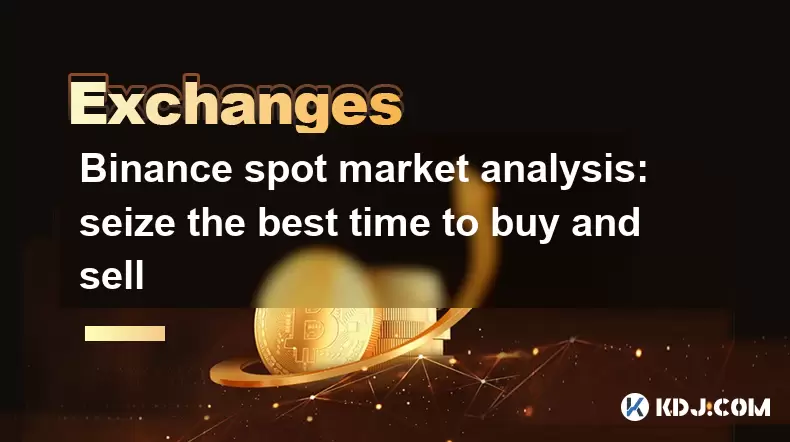
Binance spot market analysis: seize the best time to buy and sell
Jun 19,2025 at 04:56pm
Understanding the Binance Spot MarketThe Binance spot market is one of the most popular platforms for cryptocurrency trading globally. It allows users to trade digital assets at current market prices, making it essential for traders aiming to buy low and sell high. Unlike futures or margin trading, spot trading involves direct ownership of the asset aft...
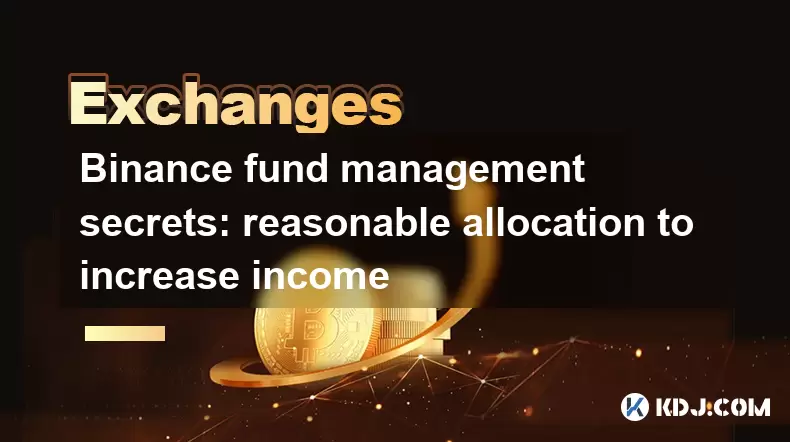
Binance fund management secrets: reasonable allocation to increase income
Jun 22,2025 at 02:29pm
Understanding Binance Fund ManagementBinance fund management involves strategic allocation of your cryptocurrency assets to optimize returns while managing risk. The key to successful fund management lies in understanding how different investment options on the Binance platform can be utilized to create a diversified portfolio. This includes spot tradin...
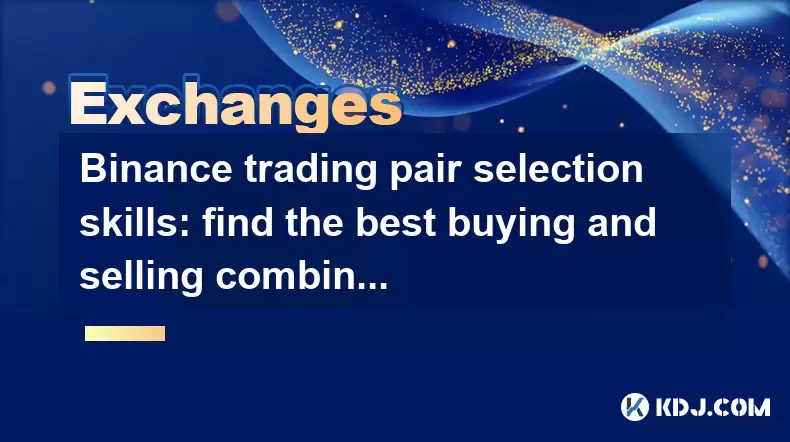
Binance trading pair selection skills: find the best buying and selling combination
Jun 23,2025 at 02:49am
Understanding the Basics of Trading Pairs on BinanceBefore diving into trading pair selection skills, it's essential to understand what a trading pair is. On Binance, a trading pair refers to two cryptocurrencies that can be traded against each other. For example, BTC/USDT means Bitcoin is being traded against Tether. Each trading pair has its own liqui...
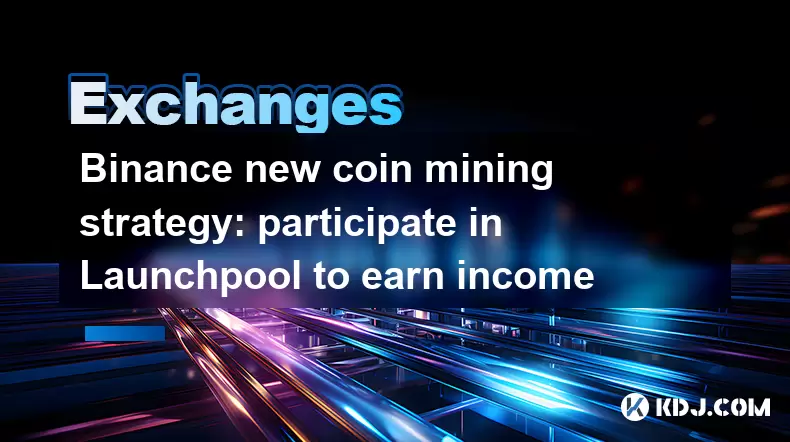
Binance new coin mining strategy: participate in Launchpool to earn income
Jun 23,2025 at 11:56am
What is Binance Launchpool and how does it work?Binance Launchpool is a feature introduced by the world’s largest cryptocurrency exchange, Binance, to allow users to earn new tokens through staking. This platform enables users to stake their existing cryptocurrencies (such as BNB, BUSD, or other supported assets) in exchange for newly launched tokens. T...
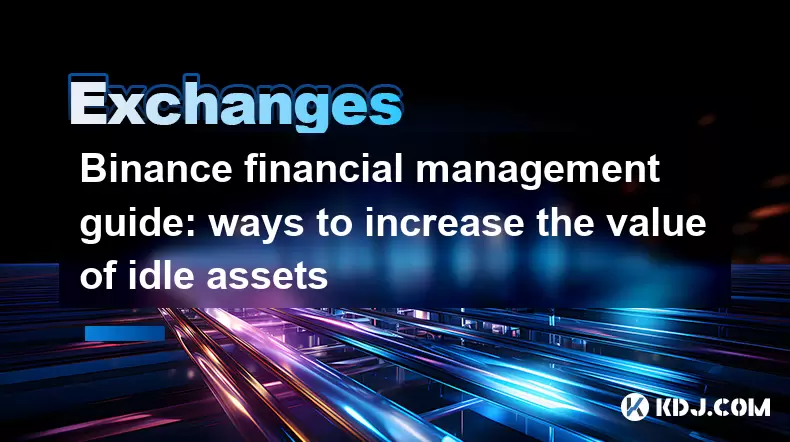
Binance financial management guide: ways to increase the value of idle assets
Jun 19,2025 at 11:22pm
Understanding Idle Assets in the Cryptocurrency SpaceIn the fast-paced world of cryptocurrency, idle assets refer to digital currencies that are not actively being used for trading, staking, or yield farming. Holding these funds in a wallet without utilizing them means missing out on potential growth opportunities. Binance, as one of the leading platfor...
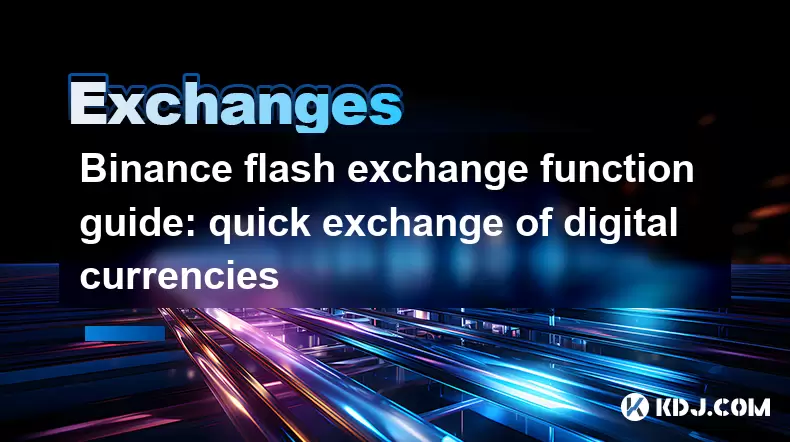
Binance flash exchange function guide: quick exchange of digital currencies
Jun 23,2025 at 12:29pm
What is the Binance Flash Exchange Function?The Binance Flash Exchange function is a powerful tool designed to allow users to instantly swap between supported cryptocurrencies without the need for placing traditional buy/sell orders. This feature simplifies the trading process by offering a direct exchange mechanism, eliminating the requirement to conve...

Binance spot market analysis: seize the best time to buy and sell
Jun 19,2025 at 04:56pm
Understanding the Binance Spot MarketThe Binance spot market is one of the most popular platforms for cryptocurrency trading globally. It allows users to trade digital assets at current market prices, making it essential for traders aiming to buy low and sell high. Unlike futures or margin trading, spot trading involves direct ownership of the asset aft...

Binance fund management secrets: reasonable allocation to increase income
Jun 22,2025 at 02:29pm
Understanding Binance Fund ManagementBinance fund management involves strategic allocation of your cryptocurrency assets to optimize returns while managing risk. The key to successful fund management lies in understanding how different investment options on the Binance platform can be utilized to create a diversified portfolio. This includes spot tradin...

Binance trading pair selection skills: find the best buying and selling combination
Jun 23,2025 at 02:49am
Understanding the Basics of Trading Pairs on BinanceBefore diving into trading pair selection skills, it's essential to understand what a trading pair is. On Binance, a trading pair refers to two cryptocurrencies that can be traded against each other. For example, BTC/USDT means Bitcoin is being traded against Tether. Each trading pair has its own liqui...

Binance new coin mining strategy: participate in Launchpool to earn income
Jun 23,2025 at 11:56am
What is Binance Launchpool and how does it work?Binance Launchpool is a feature introduced by the world’s largest cryptocurrency exchange, Binance, to allow users to earn new tokens through staking. This platform enables users to stake their existing cryptocurrencies (such as BNB, BUSD, or other supported assets) in exchange for newly launched tokens. T...

Binance financial management guide: ways to increase the value of idle assets
Jun 19,2025 at 11:22pm
Understanding Idle Assets in the Cryptocurrency SpaceIn the fast-paced world of cryptocurrency, idle assets refer to digital currencies that are not actively being used for trading, staking, or yield farming. Holding these funds in a wallet without utilizing them means missing out on potential growth opportunities. Binance, as one of the leading platfor...

Binance flash exchange function guide: quick exchange of digital currencies
Jun 23,2025 at 12:29pm
What is the Binance Flash Exchange Function?The Binance Flash Exchange function is a powerful tool designed to allow users to instantly swap between supported cryptocurrencies without the need for placing traditional buy/sell orders. This feature simplifies the trading process by offering a direct exchange mechanism, eliminating the requirement to conve...
See all articles

























































































